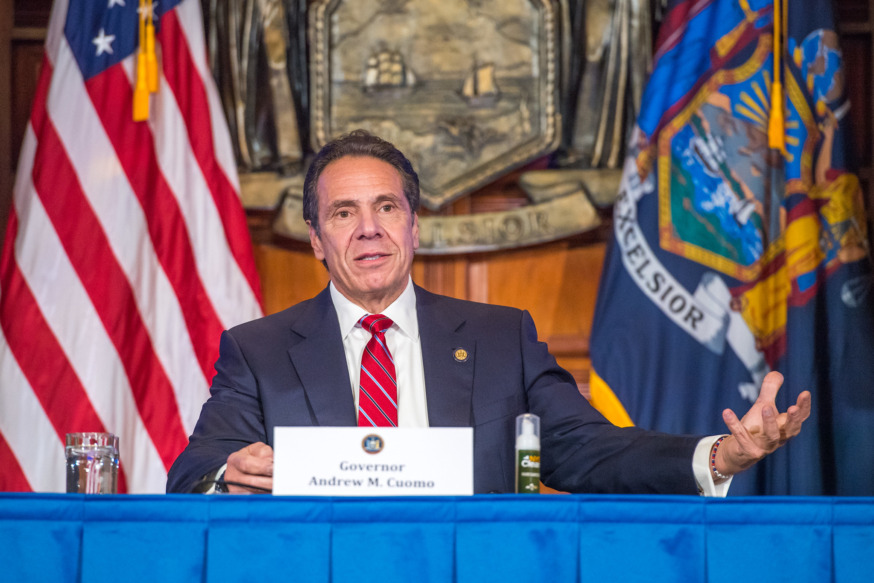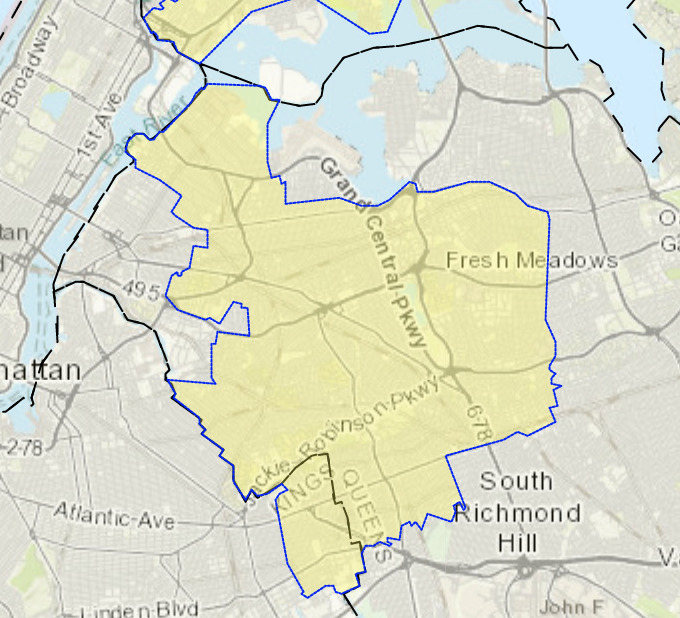
Governor Andrew Cuomo (Darren McGee/ Office of Governor Andrew M. Cuomo)
Nov. 18, 2020 By Allie Griffin
The Queens COVID-19 yellow zone has been expanded northward to cover parts of Astoria, Governor Andrew Cuomo announced Wednesday.
Cuomo said the COVID-19 positivity rate of Astoria reached 2.5 percent, putting it into a yellow zone — one of three zones where state-imposed restrictions apply to bring down the spread of COVID-19.
The yellow zone now covers a large swath of the borough including the neighborhoods of Kew Gardens, Kew Gardens Hills, Forest Hills, Rego Park and Ozone Park.
There are fewer restrictions in yellow zones than in red and orange zones. However, the restrictions are still greater than the regulations imposed on the rest of the city.
Yellow zone regulations limit houses of worship to half their maximum capacity and mass gatherings to 25 people maximum — indoors or outdoors. While restrictive, the regulations are not as tough as red zones where houses of worship are limited to 25 percent capacity, or orange zones where the limit is at 33 percent capacity.
Indoor and outdoor dining is also allowed in yellow zones, although restaurants are only permitted to seat up to four people at a table.
Schools in yellow zones can remain open, but must perform mandatory weekly testing of in-person students and staff. However, all public schools citywide will end in-person classes starting tomorrow, Mayor Bill de Blasio announced today.
Queens residents can check to see whether they live or work within a yellow zone by typing their address into the state’s zone-finder tool.

COVID Hotspot Zones (Source: New York State)
Cuomo also warned Wednesday that New York City as a whole could be designated an orange zone should its COVID positivity rate — by state metrics — reach 3 percent. According to state numbers, New York City’s positivity rate is currently at 2.5 percent.
Indoor dining and high-risk nonessential businesses such as gyms and personal care services would close down if New York City enters an orange zone.
Houses of worship would also be limited to a third of their capacity if the city becomes an orange zone.
One Comment







And still there are so many people who knowingly endanger others’ health but riding the subway or walking around without a mask. This is a selfish choice I can’t forgive, no matter how much anyone may believe in “freedom” or “liberty.”